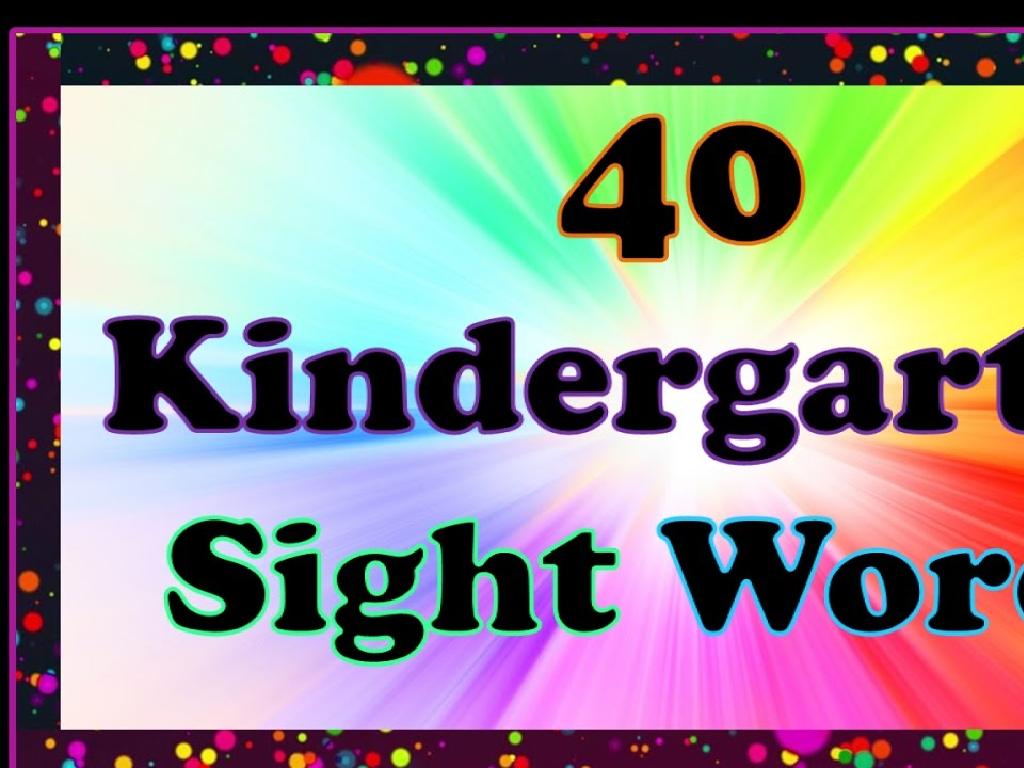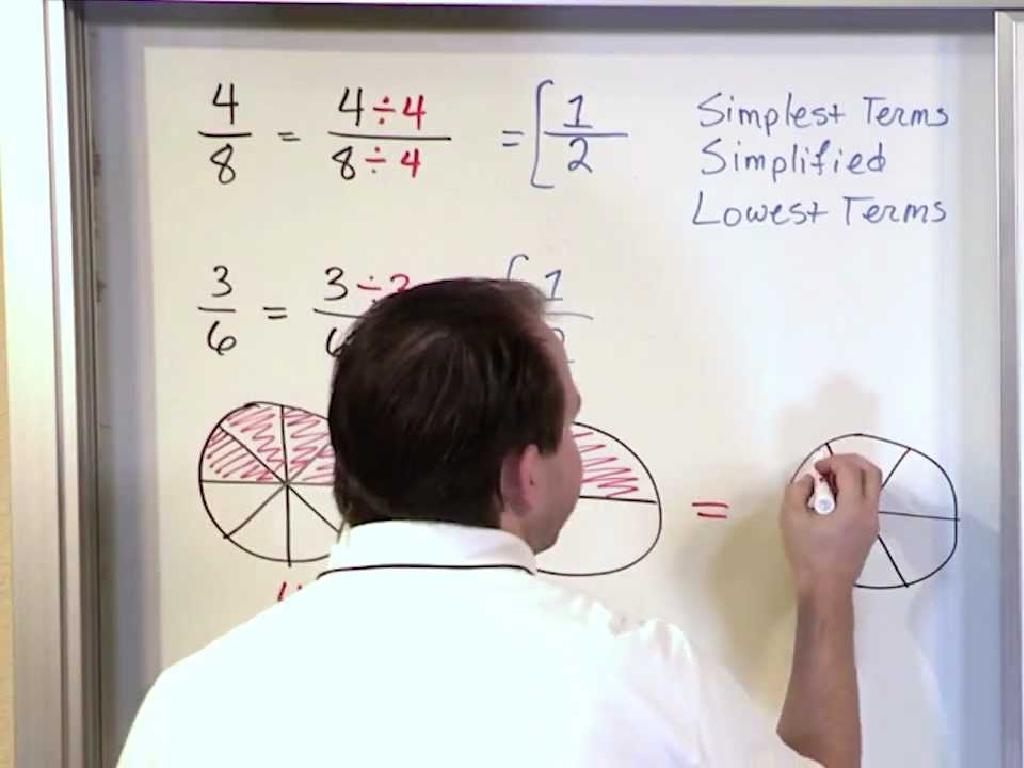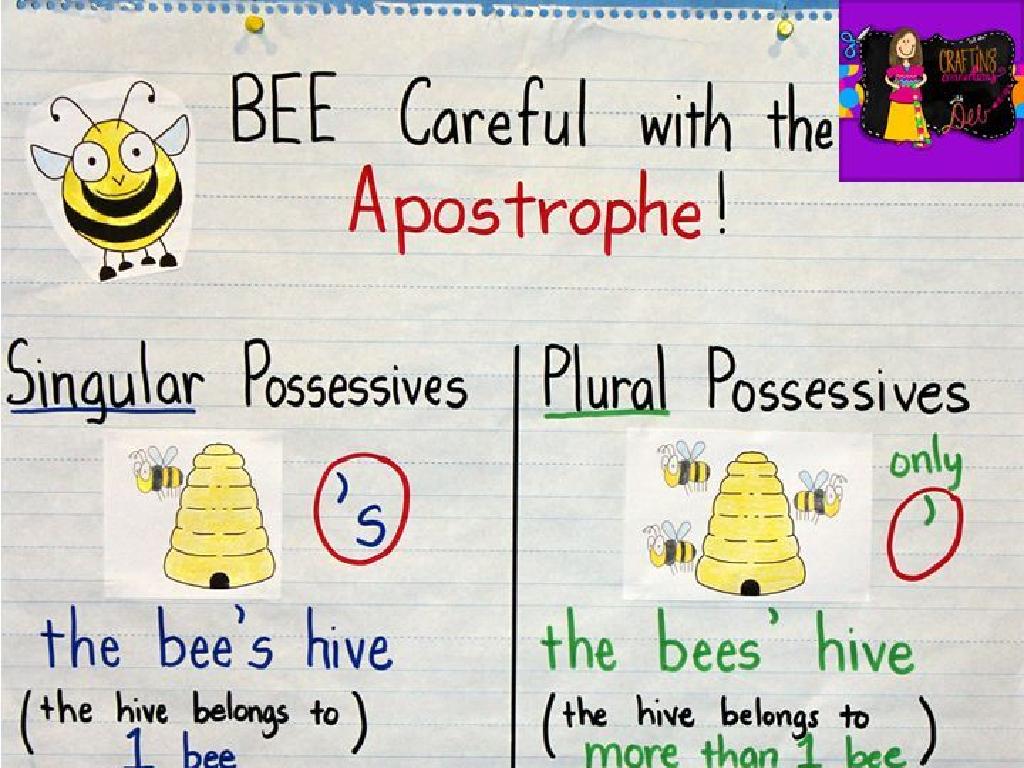Syntax: Conventions Of Standard English
Subject: Language arts
Grade: High school
Topic: Grammar
Please LOG IN to download the presentation. Access is available to registered users only.
View More Content
Exploring Syntax in English Language
– Sentence structure fundamentals
– Elements like subjects, verbs, and objects form the backbone of sentences.
– Standard English syntax conventions
– Rules governing word order, sentence agreement, and proper punctuation.
– The role of syntax in communication
– Syntax shapes how we interpret messages and express ideas effectively.
– Syntax’s impact on clarity and meaning
– Proper syntax ensures our language is understood as intended.
|
This slide introduces students to the concept of syntax within the framework of standard English. Begin by discussing the basic components of sentence structure, emphasizing the importance of subjects, verbs, and objects. Move on to the conventions of syntax, such as word order, subject-verb agreement, and the use of commas and semicolons. Highlight how syntax plays a crucial role in effective communication, influencing both the clarity and the meaning of our language. Use examples to show how varying syntax can change the meaning of a sentence. Encourage students to consider how syntax affects their daily communication and the interpretation of texts they read. Provide exercises where students can practice identifying and correcting syntactical errors.
Exploring Syntax in English Grammar
– Define Syntax in grammar
– Syntax: the arrangement of words to create well-formed sentences.
– Syntax’s role in sentence structure
– It determines how the chosen words combine to form a sentence.
– Syntax examples in literature
– From Shakespeare to modern novels, syntax shapes meaning and tone.
– Syntax in our daily language
– Everyday speech uses syntax to convey clear messages.
|
This slide introduces the concept of syntax within the framework of standard English grammar. Syntax refers to the set of rules, principles, and processes that govern the structure of sentences in a given language, specifically the order and arrangement of words. Understanding syntax is crucial for students to grasp how sentences are constructed and to improve their own writing skills. By examining syntax in various forms of literature, students can see how it influences meaning and artistic expression. In everyday language, syntax is essential for clarity and effective communication. Encourage students to bring examples of sentences from their favorite books or to create their own sentences to see how changing syntax can alter meaning.
Syntax: Building Blocks of Sentences
– Identify sentence elements
– Subject, predicate, and objects are core components.
– Differentiate clauses and phrases
– Clauses have a subject and verb; phrases do not.
– Recognize parts of speech
– Nouns, verbs, adjectives, etc., define sentence roles.
– Analyze sentence structure
|
This slide introduces students to the fundamental elements of sentence construction, which is crucial for understanding and mastering the conventions of standard English grammar. Begin by explaining the subject, predicate, and objects as the essential parts of a sentence. Then, distinguish between clauses and phrases, emphasizing that clauses can stand alone as sentences while phrases cannot. Next, review the parts of speech, such as nouns, verbs, adjectives, adverbs, etc., and their functions within a sentence. Finally, encourage students to analyze sentence structures in various examples to identify these elements and understand their interplay in creating meaning and coherence in writing.
Exploring Sentence Structures
– Simple sentences: one independent clause
– Example: ‘The sun rose.’
– Compound sentences: two or more independent clauses
– Example: ‘The sun rose and the birds sang.’
– Complex sentences: one independent clause and one dependent clause
– Example: ‘Although the sun rose, the room remained dark.’
– Compound-complex sentences: two independent clauses and one or more dependent clauses
– Example: ‘The sun rose, the birds sang, and even though it was early, the city buzzed with energy.’
|
This slide introduces students to the four main types of sentences, which are the building blocks of English syntax. Understanding these structures helps students to vary their writing style and enhance readability. A simple sentence contains a subject and a verb and expresses a complete thought. A compound sentence connects two independent clauses with a conjunction. A complex sentence combines an independent clause with one or more dependent clauses. A compound-complex sentence is a combination of the two. For practice, students should identify sentence types in their reading or create examples of each. This exercise will solidify their understanding and application of different sentence structures in their writing.
Exploring Sentence Structure Variations
– Active vs. Passive Voice
– Active voice: subject performs action. Passive voice: subject receives action.
– Word Order in English
– English syntax typically follows a Subject-Verb-Object order for clarity.
– Varying Sentence Structure
– Use different structures like simple, compound, complex sentences.
– Impact of Structure on Effect
– Sentence structure can change the tone, clarity, and engagement of writing.
|
This slide aims to deepen students’ understanding of sentence structure and its impact on writing. Start by explaining the difference between active and passive voice, emphasizing that active voice often makes sentences clearer and more direct, while passive voice can be useful for emphasizing the action rather than the subject. Discuss the typical word order of English sentences and how deviating from this can sometimes lead to confusion. Teach students how to vary their sentence structure to enhance their writing, using simple, compound, and complex sentences to create rhythm and emphasis. Highlight how these variations can affect the reader’s engagement and the overall tone of the piece. Encourage students to practice rewriting sentences in different structures to see the effect.
Common Syntax Errors in English
– Correcting run-on sentences
– Use punctuation or conjunctions to separate ideas.
– Completing sentence fragments
– Ensure every sentence has a subject and a verb.
– Fixing misplaced modifiers
– Place modifiers close to the words they describe.
– Addressing dangling modifiers
– Revise sentences so the modifiers refer to a clear subject.
|
This slide addresses frequent syntax errors encountered by students. Run-on sentences can be corrected by using proper punctuation, such as periods or commas with conjunctions, to separate independent clauses. Sentence fragments lack a complete thought and can be fixed by adding the missing elements, usually a subject or verb, to form a complete sentence. Misplaced modifiers are corrected by placing the descriptive words or phrases closer to the word they are intended to modify. Dangling modifiers occur when the modifier does not logically refer to any word in the sentence; these are fixed by revising the sentence to include a subject that the modifier can describe. Provide examples for each error type and encourage students to rewrite incorrect sentences as practice.
Enhancing Writing with Syntax
– Varying syntax to improve writing
– Use different sentence structures for effect, like short, punchy sentences or longer, descriptive ones.
– Syntax’s impact on tone and style
– The arrangement of words influences how readers perceive the voice and mood of the text.
– Editing writing for better syntax
– Review and revise sentence structures to enhance clarity and flow.
– Practice exercises for syntax
– Complete exercises to identify and correct syntax errors.
|
This slide aims to teach students how to use syntax effectively in their writing to enhance readability and engagement. By varying sentence structure, writers can create a desired effect and maintain the reader’s interest. Syntax also plays a crucial role in establishing the tone and style of a piece, affecting how the message is received. Encourage students to be mindful of their syntax during the editing process to improve the overall quality of their writing. Provide practice exercises where students can apply these concepts by identifying and correcting syntax errors, thus reinforcing their learning.
Class Activity: Syntax Surgery
– Break into groups for analysis
– Identify syntax errors
– Look for misplaced modifiers, run-on sentences, etc.
– Correct the errors found
– Apply standard English conventions
– Reconstruct sentences for clarity
– Use varied sentence structures for impact
|
This class activity is designed to enhance students’ understanding of syntax within the context of standard English conventions. Students will work in groups to dissect provided paragraphs, identifying and correcting any syntax errors they encounter, such as misplaced modifiers, run-on sentences, or fragments. They will then work on reconstructing the sentences to not only correct these errors but also to improve the overall clarity and style of the sentences. This hands-on activity will help students recognize common syntactical issues and understand how to apply the rules of standard English to enhance their writing. Possible activities include peer review, rewriting sentences from literature, or creating a ‘syntax error hunt’ where students find and fix errors in a prepared worksheet.
Syntax Mastery & Homework
– Recap: Syntax in English
– Homework: Craft a paragraph
– Use complex, compound, and simple sentences.
– Varied sentence structures
– Mix short and long sentences for effect.
– Upcoming: Punctuation’s role
|
This slide aims to consolidate the students’ understanding of syntax and its significance in writing. A brief recap of the lesson highlights the role syntax plays in conveying meaning and adding variety to writing. For homework, students are tasked with writing a paragraph that demonstrates their ability to use varied sentence structures, including complex, compound, and simple sentences. Encourage them to experiment with sentence length to create rhythm and emphasis. Looking ahead, students should prepare for the next class, which will delve into how punctuation influences syntax and the overall flow of writing. This will build on their knowledge of sentence structure and enhance their writing skills.






